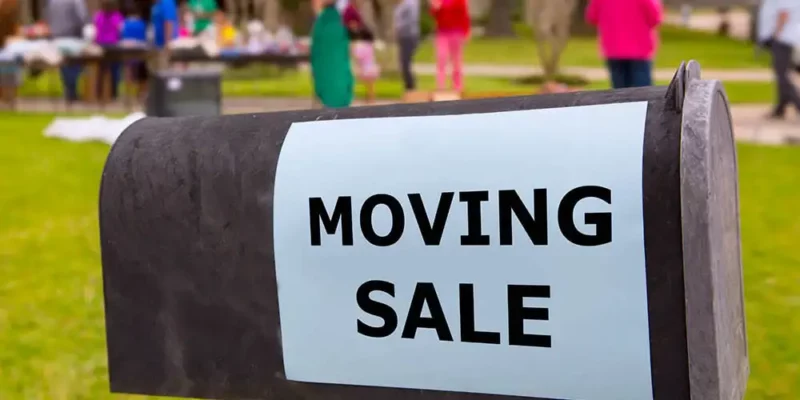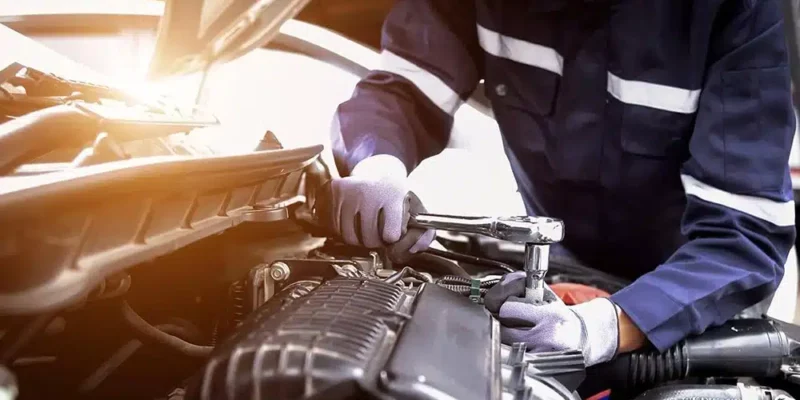
Moving to uncharted territory? You Need a Checklist.
Everything rarely goes according to plan. Create your moving checklist and put your plan in place well before your move. This is the best way to reduce your stress.
Ask yourself these questions, then check your answers against these top 10 tips for a smooth move.
Questions when you’re thinking about moving across the country:
- What’s your budget?
- How much time do you have – and how much time will you need?
- If your destination home is not ready for you, will you need to move twice?
- Will you need temporary housing?
- How much are you moving – storing (and where) – giving away?
- Will you need to store anything in your old or new city?
- Set aside extra money for unexpected and emergency moving expenses.
- Do you feel comfortable driving a big truck long-distance?
- Do you need help loading or having someone else drive the truck?
And don’t forget about these expenses:
- Utility deposits and connection fees
- Deposits, plus first and last month’s rent on a new apartment or house.
- Products to set up your new home include shower curtains, rods, bath mats, hand towels, cleaning supplies, and groceries.
Okay, What’s Next?

1. Your New Best Friend: Moving Checklist
Organization is the key to successfully managing any move, and this is especially true when you’re moving into an unknown area.
When you make and follow a checklist, your moving guide will become your new best companion—your memory bank for all the to-dos.
A good, solid checklist will help keep you on track. You’ll be less likely to forget a task that could put you in a stressful situation, and it may even save you from those last-minute panics.
Start your checklist as soon as you start planning your move so you have a record of everything that needs to happen.
Add a new task to your trusty list whenever it pops into your head.
You can even jot down when you think each task should be done and add it to the list—talk about planning made easy!
Curious about where to start? Here are a few Moving must-dos:
- Change your address with your bank, auto insurance company, retirement accounts, cell phone, Netflix, etc. Your billing address must match your credit card payments for all your online accounts, cell phone providers, etc.
- Share your new address with friends and family so they can find you.
- Forward your mail. When moving out of state, you can submit a permanent change of address with the USPS, which will forward mail from your old address to your new one.
- Disconnect your utilities at your old home and set up connections at your new home – this one is big!
- water, sewer, garbage pickup
- power, electric/gas
- internet access
- Cancel your gym membership
- Cancel your newspaper (do people still get those?)
- Make doctor and dentist appointments for the entire family and vet appointments.
- Transfer your medical information to your new healthcare providers (more details below)
- Change your Driver’s License and Vehicle Registration – one of the first things you’ll want to do when you get to your next home. Ask which documents are required and whether you’ll need a vision or driving test.
- Register to vote – In most states, you can do this online. You can register to vote in your new state when you change your address with the USPS.
Download a Printable Blank – Moving Guide Checklist
Moving to a new area is no walk in the park, but with a solid plan and determination, you can land in your new home with less stress.
If you’re gearing up to move soon, start getting things ready now. Use your Moving Checklist to keep tabs on what you’ve done and what’s left to do, and take small steps each day to prep.
When moving day finally arrives, you’ll be glad you made the effort to plan and prepare.

2. Compare the Cost of Living Differences between your current and future location
Nobody wants to change their lifestyle – except for the better! Be sure you know the financial effects of making the move and how that might alter your day-to-day life.
Understand how much more (or less!) your new life will cost if you move across the country. You can use a cost of living calculator to check out differences in housing, transportation, food, clothes, etc.
Be sure to check up on state taxes, too. Know your destination state, sales, and income taxes to properly budget for relocating from another state.
Tip: This info will be invaluable if you’re trying to negotiate with your employer for moving costs.

3. Negotiate with your employer for relocation reimbursement
If you’re going to a new state for a job opportunity, your employer may offer you a stipend for your moving expenses.
Some employers will reimburse or pay your expenses directly, and some will give you the money up-front. Negotiating your relocation reimbursement when you negotiate your salary and benefits would be best.
Here’s what Indeed says about How To Negotiate Salary After a Job Offer (With 13 Tips)
Remember, you’ll have taxes on the reimbursement amount at the end of the year.
4. Start as early as possible
Packing up your life and getting ready to move always takes longer than you think it will. If you need a month before your moving day, extend that to six weeks.
We get it—moving can be stressful, but time can be your best ally. Start well in advance, follow your personal Moving Guide Checklist, and you’ll have a great experience.
When you start early, you can pack everything carefully and maintain an organized system.
And when it’s time to settle into your new home, you’ll thank yourself – it will make unpacking and settling in much less stressful.
Make a list of what to pack based on priority. Those books, decorative pieces, and spare bedding can be the first to find their way into moving boxes.
As moving day approaches, pack essentials like dishes, clothing, bathroom basics, and everyday necessities—they may be the last to leave your old home.

5. Know what to expect when hiring movers
Moving all your possessions will probably be the most significant expense and challenge of moving across the country.
Costs can quickly spiral out of control, mainly when you use professional movers. Look closely at your budget, personal needs, and preferences.
Here are a few options for moving and storage for moving across the country:
Hire Professional Movers. Full-service movers will pack your belongings, transport them, and unpack them in your new house.
- Hire professional movers to load and drive a moving truck – this is the most expensive and rigid option in terms of scheduling. The more help your movers offer, the more you pay. However, the extra assistance can be worth the cost. Be prepared for sticker shock.
This can be especially helpful if you have kids, are starting a new job immediately, or otherwise have limited time to handle the details.
- If this doesn’t fit your budget, you could pack your belongings and hire a moving company to transport them.
- You can also hire local movers to help pack or load the parts.
- Rent a moving truck and bribe friends and family members to help you load, or hire local movers to load and unload.
- Use a portable container for packing, moving, and storage—this option may be affordable. It’s also the most flexible and can be helpful if you’re using temporary housing.
- The least expensive option is renting a moving truck or trailer and driving it to your new location. However, if you rent a car, you’ll need a way to transport your vehicle to your new city.
Other moving expenses you may not have thought about:
- Your moving truck rental company can charge gas/diesel if you don’t return the truck with a full tank.
- Mileage overage surcharges
- Packing supplies like boxes, bubble cushioning rolls, packing tape, etc., can add up quickly, especially if you don’t find free boxes.
- You may need to ship your car cross-country
- Hotel rooms and meals out during your out-of-state move
TIP: Pack a box of necessities you may need for the first few days—such as toilet paper, paper towels, toothbrushes, towels, and snacks. If it goes on the moving truck, ask them to pack it last so it comes off first.
Make a special section in your personal Moving Guide Checklist for a boxing/packing outline – so there’s no doubt things go together, grouped by room.

6. Downsize as much as possible
TIP: Get rid of as much clutter as possible. The less you have to move, the more affordable your move will be.
Whether you’re moving across the country or across the street, this is a rare chance to declutter, simplify, and streamline your possessions.
The cost of your move is directly related to the volume of stuff you’re moving think about turning this into a treasure hunt for what truly matters. Set aside time to assess each item, and if it doesn’t find its way into your everyday life, maybe it’s time to put it in your garage sale.
Also, consignment stores are a good way to earn a little cash for high-end household items you can live without.
(Editors note: I received checks in the mail from a consignment store for six months after my last move!)
If you don’t love it or use it frequently, it may be time to part ways with it. Not only will this make moving easier, but it will also reduce the clutter in your new home.
Tip: Create a section in your Moving Checklist for the “goodbye items,” then make the decision only once!

7. Moving your car: Checklist for inspections
If you’re driving your car across the country, getting it inspected and serviced first is critical. The last thing you need is for your car to break down in unfamiliar territory on your way to your new home—at night, in the rain.
Even if your car isn’t due for an inspection, take it to your trusted local mechanic and ask him to ensure everything is in good working condition for your trip.
If your mechanic isn’t confident about anything, invest in new parts. Be sure he checks tires, brakes, and batteries to be ready for a long road trip. Go ahead and get the oil and filters changed—just do it!
8. Connect with anyone you know who lives in the new area
Start thinking about your new life ahead. Moving across the country can be overwhelming, but it helps to develop your relocation network quickly and to find new friends and service providers.
Connect with anyone you already know who lives in or near the new area. Hopefully, you developed a good relationship with your real estate agent because your agent can be invaluable in helping you find your way around your new city.
Looking for a resourceful real estate agent in the Dallas area?→
Also, tap into your network within your current community – you might find some valuable links. Maybe someone you know has friends or a family in your destination city, and they could connect you. Even a simple test introduction – that contact might become your new friend and go-to in your new city.

9. Moving Checklist for Your Healthcare Information
Tip: If your current insurance company offers a mail-order prescription option, get a 90-day supply if they allow it. Then if you keep the same insurance company after you move, simply change the delivery address.
Take action well in advance to decide on your healthcare. Even if you don’t need new insurance providers, you’ll need new doctors and a pharmacy.
- Call your current doctor’s office for your medical records and prescriptions. If they offer electronic transfer to your new healthcare providers, you may need to go in person to sign for and pick up your records.
- Ask for a referral to your new destination if your insurance allows it.
- Stock up on prescriptions before moving.
- Be prepared for a delay in booking appointments with your new doctors.
 10. On the Road: Take your time if you’re moving with kids or pets
10. On the Road: Take your time if you’re moving with kids or pets
This could backfire if you have children or pets. Your family may be unable to travel at such a pace, so it’s better it’slan breaks than drive until you have an emergency.
Put a special area in your Moving Checklist for kids and pets.
- Plan Ahead: Begin preparations well in advance to reduce last-minute stress.
- Create a moving timeline that factors in everything from packing to settling in.
- Carefully research your route and make a loose itinerary for your trip.
- Make sure you have options for pet-friendly hotels
- Involve Them. Make kids part of the process.
- Discuss the move openly, answer their questions, and listen to their concerns. Their involvement can ease their anxieties.
- Packing Buddies: Assign each child a role in the packing process. Let them pack their belongings so they can choose items they’d like to keep closed during the journey.
- Keepsakes Box: Have kids create a special box of their favorite items, toys, and comfort objects. This box can travel with them, providing a sense of familiarity during the move.
- Essentials Bag: Pack a bag of essentials for each child, including clothing, snacks, toys, and any necessary medications. Keep these bags easily accessible during the trip.
- Pack plenty of snacks for the road.
- Frequent Breaks If driving, plan for regular breaks to stretch your legs, explore, and have fun. Make the journey enjoyable by turning it into a mini road trip.
- Play familiar, comforting music to calm the kids during the long drive.
- Exploration Adventure Turn the move into an exciting adventure. Research and discuss the new area together, highlighting fun places to visit and new friends to make.
Moving Day
- Moving Day Care: Arrange for childcare on moving day. This ensures kids stay safe and engaged while the hustle and bustle of moving takes place.
- Unpack Their Room First: Upon arrival, focus on unpacking and setting up their rooms. Having a familiar space can help kids feel more at home and secure.
- Meet the Neighbors: Encourage kids to make new friends by visiting local parks and community events or introducing them to neighbors with kids of similar ages.
Tip: Be sure you have access to plenty of money for emergencies.
Remember, the key is to create a positive and supportive atmosphere, ensuring that the move becomes an exciting new chapter for the entire family.
NEED A REAL ESTATE PRO? MEET OUR TEAM.
We know what we’re doing, and we’re here to help.
Questions? Ask Us Anything!
Let's Connect
Tell us what's on your mind - we'll get right back to you.
